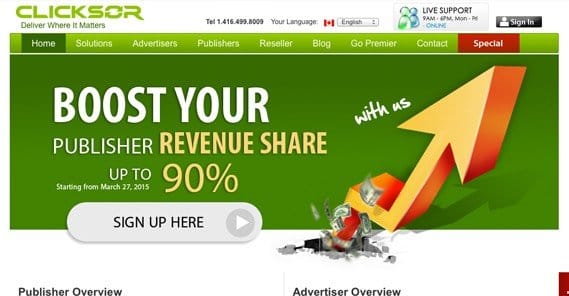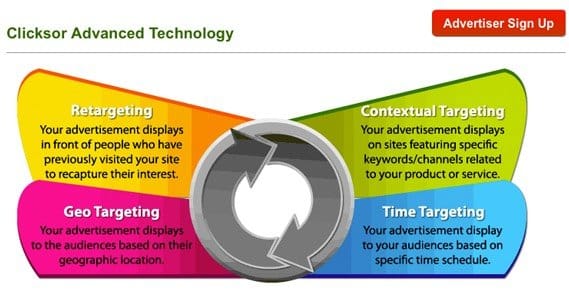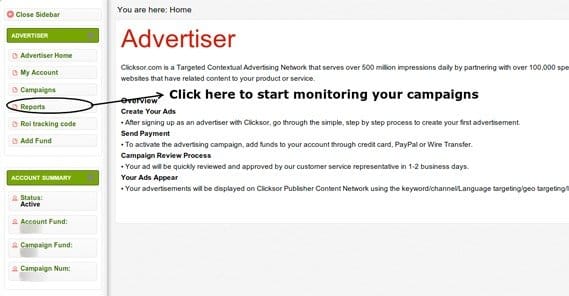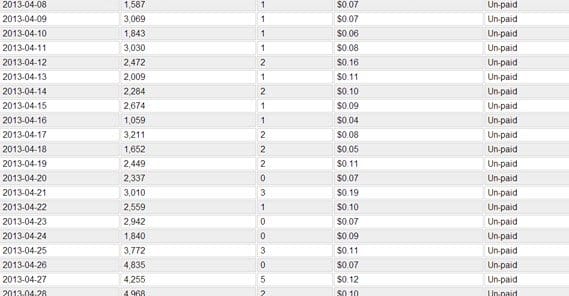How Well Does Clicksor Traffic Convert to Website Sales?

There comes a time in any young website’s life where it turns its gaze outwards and starts looking at the traffic surging around it. When this happens, you start to look for ways to bring in that traffic, to feed the hungry website, and your bank account besides.
One such method is to run contextual ads on other websites. The way it works is simple. You join a network and add your site to the advertisers list. You look for publishers – the people writing content – who work in your industry, or in related industries. You do this via keyword, so you had best know the relevant keywords for your site.
When you find a publisher that fits, you bid on their ad space. You compete against other sites looking to get their ads on that site as well, and you bid back and forth until one of you backs out. Realistically, you set a maximum bid and the system compares the two and picks a penny higher than the lower of the two limits.
Once you’ve won the bid, the ads go into action. On the publisher’s website, certain words and phrases in their blog posts – words and phrases relating to your site and niche – become links. Those links direct users to your site. Boom; effortless traffic on a budget.
One such system for contextual display ads is Google’s AdWords. Another similar system is Clicksor. If you’ve been paying attention to the title, at this point you’ll discern that I’m going to talk predominantly about the latter of the two.
Why, though, would you use a system other than Google? After all, Google’s display network is immense and the publishers range in quality from thin affiliate sites to massive blog networks. Well, with such a vibrant network comes a lot of rules, regulations, and competition. You’ll end up paying a lot, and if Google takes issue with any of your content, you can be blocked from the program. It’s cheaper and easier, albeit lower volume, to try another network like Clicksor.
Advertiser Perks for Clicksor
Clicksor advertises several perks for advertisers on their platform. For one thing, they strive to be highly relevant using updated algorithms. They also note that their selection of publishers is top-notch. They might not have the monopoly on the best sites, but they filter out the worst of the chaff. You know your ads will go to good homes.
Clicksor also brings with it a lot of analytics and real time reports for your perusal. Google has such volume that it can’t process all its data and often has to resort to sampling; not so with Clicksor. You get all of your data, not sampled data, and you get it with up to the minute reporting.
One of the benefits I touched on, but that they don’t mention, is that their traffic tends to be very cheap. It’s reasonable that they don’t mention this up-front; publishers would be wary of a site that advertises that they don’t pay much. On the other hand, it’s exactly what you want as a marketer.
You have two options; channel matching and keyword matching. Keyword is simple; pick words and phrases to target. When those words and phrases appear on publisher sites in their content, they become links to your content. Channel matching is a little different. You have 18 categories and over 200 sub-categories to dig through. You pick a category, and your ads appear on sites in that category. It’s not as precise as keyword matching, though.
As an advertiser, cheap views is a good thing. So how does it stack up in terms of conversions?
Clicksor Conversion Rates
Well, the conversions you’ll get from Clicksor depend on the kinds of objectives you’re shooting for.
If you’re just looking for views for affiliate ads, you’re probably best advised to look elsewhere. Chances are, you’ll be spending more on incoming traffic than you’re getting out of your CPM. If you could find a situation where the views are cheaper than the payment you get, feel free to milk it, but it won’t last.
If you’re looking for offer fills, you might get a few. Honestly – and this is coming from black hat forums – traffic isn’t very good from Clicksor sites. Because of their low pay, they don’t attract the top tier sites that would convert at high rates.
Website sales are even harder, whether you’re selling products directly or promoting affiliate sales. You might get some using variable affiliate cookies, like Amazon’s associates program, but then again you might not.
My advice: run very small tests on Clicksor, no more than a couple dollars at a time, and measure the quality of the traffic you bring in.
Traffic Issues
Clicksor has been around for nearly a decade, and in that time they have varied wildly in quality. On the low end, there were common reports of antivirus flags and malware in their ads. This is obviously bad all around, and one might assume that they’ve fixed those issues in the last few years.
They also have common reports of poor traffic. You might expect extremely low conversion rates. On the other hand, if one conversion pays for thousands of views, and you can get a few conversions per thousand views, you can still make a profit.
The biggest hurdle you face on Clicksor is the minimum payout. Publishers require a minimum of $50 in their accounts to cash out, but the low volume and low pay rates meant it was extremely hard to reach that $50 price point. This means, as an advertiser, chances are good that a lot of the money you pay into the system is just lining the coffers of Clicksor itself. It also means there’s a high turnover of publishers, so the sites you advertise on might not run Clicksor ads a few months down the line.
 ContentPowered.com
ContentPowered.com







